Hiroshima University's 'Center of KANSEI Innovation Nurturing Mental Welfare' pursued research focusing on 'Kansei' (emotions) such as 'exciting' and 'moving,' which could only be expressed subjectively to date. The center successfully visualized Kansei for the first time in the world by scientifically approaching it from the viewpoint of brain science. Their achievement will be gradually used in various fields, including health management and product development by companies. The center aims to contribute to the realization of a society that is not only rich in tangible material wealth, but also rich in spirit.
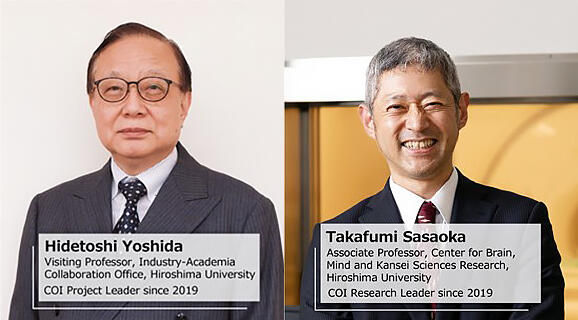
Kansei defined as a highly advanced brain function after multiple discussions
In these times of natural disasters and various other risks, more and more people are placing importance on happiness, or emotional wealth, based on their own 'Kansei,' not just material wealth. In order to get ahead of this trend, the 'Center of KANSEI Innovation Nurturing Mental Wealth,' which aims to create new industries from Kansei, was founded in 2013. "We talk of Kansei as though it is commonplace, but Kansei is an idea peculiar to Japan. This is shown by the fact that there are no words in English that are equivalent to Kansei in Japanese. So, the word 'Kansei' is used in English," said Visiting Professor Hidetoshi Yoshida of the Industry-Academia Collaboration Office, Hiroshima University, and project leader.
Twenty-four groups were organized around Hiroshima University, the core, and its two COI-S (satellite) bases, the National Institute for Physiological Sciences COI-S Base and Optical Technology Development COI-S Base. The reason for this project being selected as core research was that it is said Professor Emeritus Mitsuo Nagamachi of Hiroshima University pioneered 'Kansei Engineering.'
Since then, Yoshida points out that with the development of brain science thanks to the improved functional magnetic resonance imaging (fMRI) technology, the shift in society from the consumption of "tangible goods" to "intangible goods" during the 2000s, and advocacy for the SDGs since 2015, the times have now finally caught up with his research.
Associate Professor Takafumi Sasaoka, Center for Brain, Mind and Kansei Sciences Research, Hiroshima University, says the COI members had various academic backgrounds such as brain science, psychology, psychiatry, and engineering, so they started by redefining "Kansei" to have a common meaning among the participants. "After about three years of discussions, this project decided to define Kansei as a higher level of brain function that evaluates things, triggered by 'awareness,'" continues Associate Professor Sasaoka. (Fig. 1)
Kansei may tend to imply the movement of the mind, but it is said that behind it there are complex brain processes involved. For humans, two modes of input channels are used to receive external and internal information, one is through exteroception such as visual and auditory senses that pick up external stimulation and the other is interoception that captures changes in physiological state of the body, such as respiration and heartbeat. This information is then matched with memories and experiences, leading to elicitation of emotions such as joy, anger, sorrow and pleasure. Moreover, intuitive 'awareness' is generated from emotion which then induces output of the 'movement of the mind.' This entire process in our brain was defined as Kansei and became the target of the Center's research.
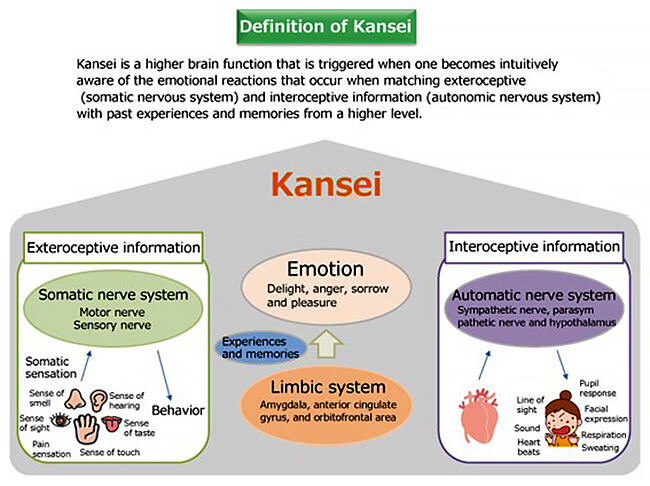
A 'toolbox' full of analytic methods
Each research team formed their own research theme by rethinking its own understanding of Kansei from a specialized viewpoint in line with this definition. "Defining Kansei at the onset succeeded in producing results through in-depth and clear thinking of what should be clarified and how it can be applied to industries," said Visiting Professor Yoshida. Just as he said, about 20 tools were developed in the past nine years and Kansei was successfully visualized.
Many of the results have been put into practical use in cooperation with business entities. An example is 'REAL-TIME VISUAL SALIENCY,' which combines line of sight measurement and modeling to visualize where people focus on when they watch things. (Fig. 2) Saliency generally means a striking point or feature, but in the domain of brain science it stands for special characteristics that stay in the human eyes and ears. According to the research teams, REAL-TIME VISUAL SALIENCY will be applied to form product designs and catalogs that easily gain people's attention. Commercialization took place during FY2021.
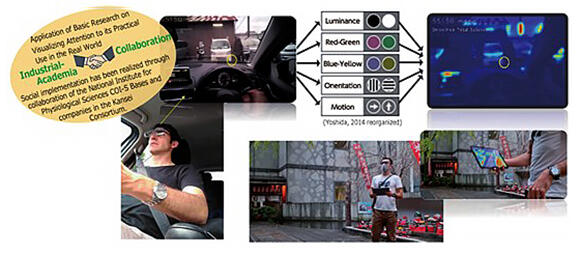
(Yoshida, 2014 reorganized)
The second is a 'Kansei meter,' that has enabled measurement of 'feeling excitement,' which to date could only be expressed subjectively. (Fig. 3) A model was developed around the three axes of pleasure-unpleasure, arousal and sense of expectation that changes as time passes, by measuring brain activities using an electroencephalograph and fMRI. The research team have also conducted a demonstrative experiment of visualizing 'how tasty bread is' by quantitatively evaluating the sense of excitement when people eat bread.
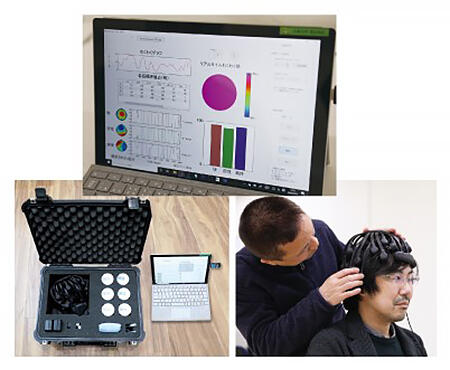
Despite the excellent results, Visiting Professor Yoshida thought that more appeal was needed and so he combined the individual technologies into a 'integrated analysis package.' "This is something like putting a roof over randomly standing pillars. I thought it would be good to push forward a message that there is a 'toolbox' full of analytical methods for Kansei research," he said disclosing the purpose. As he intended, inquiries from business entities and the volume of collaborative research are steadily increasing. A 'Mirai Health Handbook' (みらい健康手帳 in Japanese, and tentatively name HU-MHR) health management application has just been released. The day where we can experience various tools using our smartphones and/or wearable terminals seems to be not too far off. (Fig. 4)
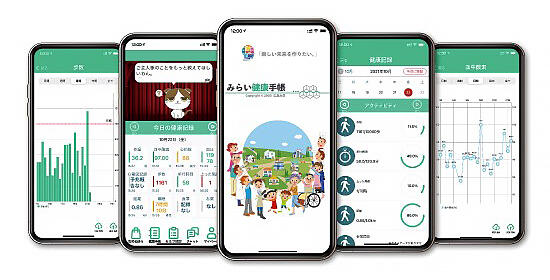
Establishment of a good circulation of industry-academia collaboration
Barriers that existed among diverse groups and domains were significantly lowered as a result of efforts to build a flexible system in which corporate issues were shared and seamlessly transferred among research groups, in addition to inviting business entities, in the process of packaging. Another important factor was that researchers and business entities were able to give and take feedback on an equal basis. "There has so far been a lot of research of passive nature, such as consigned research. In the COI, however, by seriously working on problems that business companies may have, new problems became visible on the research side too. A good cycle of solving social problems has been created through repetition of research and demonstrative experiments to produce results."
The COI program ended in FY2021, but it was decided that the collaborative structure will be maintained among bases and business entities. "In the future, I would like to nurture Kansei research as a discipline in an in-depth manner. At the same time, I would like to start visualization of the state of mind," said Visiting Professor Yoshida, seeing his next target. Results of the Kansei research will be implemented in society one after another and will become a part of people's daily lives. Visiting Professor Yoshida and Associate Professor Sasaoka will continue their activities so that a society rich in material wealth and happiness can be realized.




